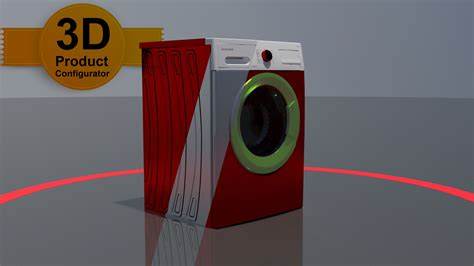In today’s fast-paced and ever-changing retail industry, staying ahead of the competition is vital to success. As such, retailers are continually seeking innovative ways to engage customers and provide unique and personalized experiences. One such way is by implementing 3D product configurators for websites. In this blog post, we will discuss the advantages of implementing 3D product configurators for retail websites, including enhanced customer experience, increased sales and revenue, streamlined operations, and a competitive edge.
Advantages Of Implementing 3D Product Configurators For Retail Websites
Enhanced Customer Experience
Gone are the days of static images and two-dimensional product representations. With 3D product configurators, customers can interact with products in a more engaging and immersive way. By allowing customers to rotate, zoom in and out, and customize product colors and features, retailers can provide a more interactive and engaging shopping experience. This can increase customer engagement and time spent on the website, as well as increase customer satisfaction.
In today’s world, customers also expect a personalized shopping experience. By implementing 3D product configurators, retailers can provide customers with a customized shopping experience. Customers can choose their preferred product configurations and see how it looks in real time, allowing them to make more informed decisions about their purchases. This can lead to increased customer loyalty and repeat business.
3D product configurators also provide customers with a better understanding of the products they are interested in purchasing. By being able to see the product from different angles and customize it to their preferences, customers are more likely to be satisfied with their purchase leading to reduced product returns and increased positive reviews, which can help build a retailer’s brand reputation.
Increased Sales & Revenue
Product returns can be costly for retailers, both in terms of time and money. With 3D product configurators, customers can see the product in real-time, reducing the chances of returns due to misunderstandings or miscommunications about the product’s features. This lowers costs associated with product returns and increased overall revenue.
With 3D product configurators, customers can also see the different customization options available for a product, which can lead to increased sales. Customers are more likely to add additional features or accessories when they can see how they will look in real-time, increasing average order value, which can boost overall revenue.
By providing customers with an engaging and personalized shopping experience, retailers can also increase customer loyalty. Satisfied customers are more likely to return for future purchases, leading to increased revenue in the long term. Additionally, satisfied customers are more likely to recommend the retailer to their friends and family, leading to increased brand awareness and potential new customers.
Streamlined Operations
3D product configurators can automate the order processing system. With the ability to customize products in real-time, orders can be processed automatically, reducing the need for manual intervention which can ultimately improve revenue.
With automated order processing, lead times can also be significantly reduced. Customers can customize their products and place their orders without the need for manual intervention. This can lead to improved customer satisfaction and increased revenue.
By implementing 3D product configurators, retailers can also track customer preferences and customize product configurations, which can help with inventory management. Retailers can better predict which products will be in demand, leading to better inventory management and reduced costs associated with overstocking or understocking products.
Competitive Edge
In the current competitive retail landscape, it’s essential to stand out from the competition. By implementing 3D product configurators, retailers can differentiate themselves from their competitors. Customers are more likely to choose a retailer that offers an engaging and personalized shopping experience, which can give retailers a competitive edge.
As technology continues to evolve, customers are becoming more tech-savvy as well. By implementing 3D product configurators, retailers can appeal to these customers and show that they are keeping up with the latest trends in technology increasing brand awareness and customer loyalty.
Additionally, with the increasing trend towards e-commerce, retailers have the opportunity to reach a global audience. By implementing 3D product configurators, retailers can provide a personalized and engaging shopping experience to customers around the world. This can lead to increased revenue and market share.
Conclusion
3D product configurators offer several advantages for retailers looking to enhance customer experience, increase sales and revenue, streamline operations, and gain a competitive edge. In a fast-paced retail industry, implementing 3D product configurators may be the key to success.



































